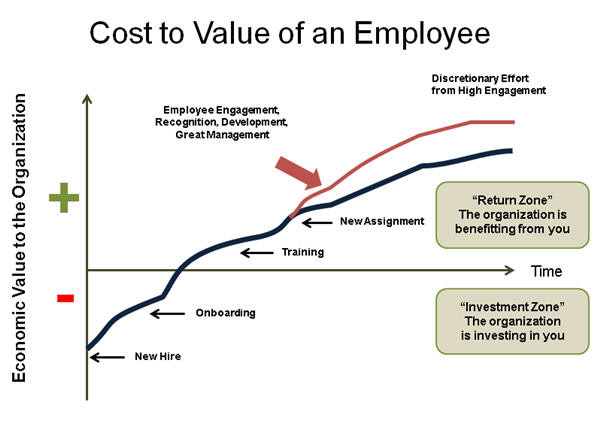It’s every HR leader’s nightmare: the surprise resignation. That two-line email that lands with a thud, leaving you with that gut-punch feeling and a flurry of self-doubt. The star engineer you thought was happy. The high-performing salesperson who just hit their quota. One minute they’re a critical part of the team, the next, their absence triggers a wave of questions and sleepless nights.
But here’s the truth. It’s rarely a surprise. The signs an employee wants to quit are almost always there.
Behind almost every “out of the blue” exit is a story told in scattered data points a dip in engagement scores, a few extra sick days, quieter participation in team meetings, 1:1s that kept getting rescheduled. These aren’t just random events. They’re signals. The problem is, they’re buried in a dozen different, disconnected systems from your payroll software to your performance review spreadsheets each telling only a fraction of the story.
The Real Cost of Being Blindsided
When you can’t connect the dots in time, the consequences for your employee retention strategies are severe.
- Operational Chaos: Projects stall, institutional knowledge walks out the door, and remaining team members face increased workload and stress. Compounding this, the average hiring process alone can take over 3-4 months to source, interview, and onboard a new employee, according to industry data. The real cost, however, is the time to productivity the period it takes for a new hire to reach full efficiency, which can extend for another six months or more. This prolonged gap in talent directly impacts productivity and momentum, putting a heavy strain on the entire team.
- Financial Drain: According to a Gallup report, the cost to replace an individual employee can range from one-half to two times their annual salary, depending on the role. This isn’t just a loss of productivity; it’s a direct and significant hit to your bottom line.
- Team Instability: Morale plummets and “who’s next?” anxiety is real. When key team members leave, it can trigger a domino effect of more exits, eroding trust and stability across the organization.
The Unseen Value: Understanding the Economic Curve of an Employee
The financial pain of an unexpected exit is clear, but it’s only half the story. To truly understand the cost of employee churn, you must look at the economic value of a team member over their entire tenure.
Think of it as a lifecycle. When a new hire joins, the company invests in them through recruiting, onboarding, and training. During this ramp-up phase, the employee’s costs outweigh their productivity. Over time, as they gain experience, institutional knowledge, and deep connections, their productivity peaks and their value to the organization far surpasses their cost. This is where the company realizes a significant return on its investment.
As the chart below illustrates, a surprise resignation doesn’t just cut off a critical resource; it severs this value curve right at its peak. The company loses the compounded return on its investment and is forced to restart the entire cycle, absorbing new costs and a new ramp-up period.

Source: Josh Bersin, “Economic Value of an Employee to the Organization over Time”
This Isn’t a People Problem. It’s a Data Problem.
Your managers are busy. Your HR team is stretched thin. No one has the time to manually cross-reference spreadsheets to understand why employees quit.
This daily struggle with disconnected HR technology isn’t just frustrating; it’s a massive drain on your team’s time.
When you stitch together disparate point solutions one for payroll, another for engagement surveys, and a third for performance reviews , your data lives in silos. It’s raw and fragmented, leaving you to rely on guesswork.
This is where people analytics comes in. It takes that disconnected data and transforms it into clear, actionable insights, empowering you to make strategic, fact-based decisions.
This is the transition from being reactive to proactive, and an AI-driven, unified HCM platform like Akrivia HCM is the key to making that happen.
From Guesswork to Foresight: Predictive Analytics for Employee Retention
So, how to reduce employee turnover? Predictive People Analytics isn’t just another HR analytics tool. It’s a strategic capability that turns scattered data into clear, actionable foresight.
At its core, it works by applying advanced analysis to your existing employee data to identify patterns and predict future outcomes. It’s the difference between seeing who left last quarter and predicting who is at risk of leaving next month.
In fact, companies using predictive workforce analytics for staff retention are 3.1x more likely to outperform their peers, according to a report on HP Tech@Work.
Here’s how it works:
-
How to identify flight risk employees. AI models analyze thousands of data points to pinpoint the specific combination of factors like low engagement, high overtime, and a recent promotion denial that signal a high flight risk in your organization. Studies show these models can identify at-risk employees with up to 95% accuracy.
-
It tells you why. Instead of just flagging high employee churn, it shows you why it’s happening. Is it isolated to one department? A specific tenure band? Is it correlated with a recent change in commission structure? This is the insight that leads to making the right strategic decisions.
-
It helps you act, not just analyze. The best employee retention software doesn’t just give you data; they provide a clear, streamlined path to effective intervention, turning insight into successful action.
How Akrivia HCM Makes Predictive People Analytics the Heart of Its Platform
Predictive People Analytics isn’t just a feature of Akrivia HCM; it is one of the four pillars that power its entire ecosystem. It is the heart of the platform turning raw data into strategic foresight, enabling HR teams to foresee flight risks and intervene early.
This integrated approach elevates retention management from a reactive task to a proactive, data-driven discipline.
Because it’s part of a fully unified HCM, you can:
-
Calculate real-time flight risk scores for every employee with AI models that continuously learn and adapt.
-
Perform granular root cause analysis by slicing data across tenure, function, location, and more to ensure your interventions are correctly targeted.
-
Measure talent retention program impact with predictive feedback loops that help you refine your approach and prove its value.
-
Access holistic workforce insights that encompass engagement, sentiment, diversity, compensation, and productivity all in a single, streamlined system.
-
Deliver intuitive visualizations and share controlled insights, so managers and leaders get the right information at the right time, without manual effort.
This capability doesn’t just provide information it actively shapes how all other HR functions operate within Akrivia HCM, seamlessly connecting talent management, payroll, and employee experience. It provides the strategic clarity to make the right decisions and the operational power for effective intervention.
Conclusion: Predictive People Analytics Is the Future and the Heart of Modern HR
Employee retention remains a top priority for HR teams across industries. Leveraging predictive people analytics within a unified HCM framework empowers organizations to transition from managing employee turnover to mastering talent retention.
By proactively addressing flight risk, businesses can mitigate the significant financial drain and operational chaos caused by employee churn. This approach also shortens the lengthy hiring cycles that burden teams and allows for a more focused and strategic approach to talent management.
Through intelligent analysis of flight risk and engagement metrics, businesses can tailor bespoke employee retention best practices that not only reduce turnover but also foster a culture of sustained employee growth and satisfaction.
Predictive People Analytics is no longer a luxury or a future concept. With Akrivia HCM, this vital capability sits at the very core of your HR technology stack. Whether you’re a nimble startup or a global enterprise, leveraging predictive insights lets you reduce surprises, make smarter decisions, and build an employee experience that fosters loyalty and growth.
Ready to turn data into foresight?
Discover how the predictive people analytics pillar within Akrivia HCM empowers your HR team to predict, prepare for, and prevent surprise attrition.




